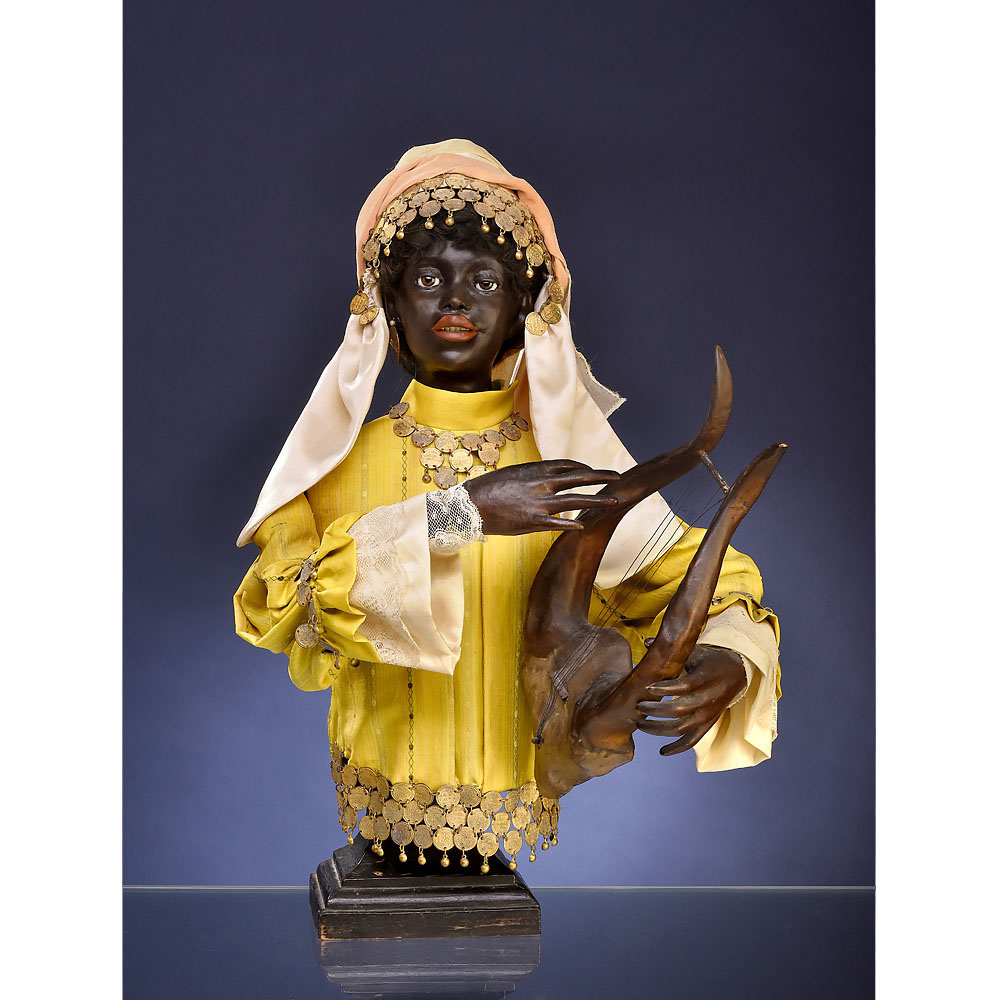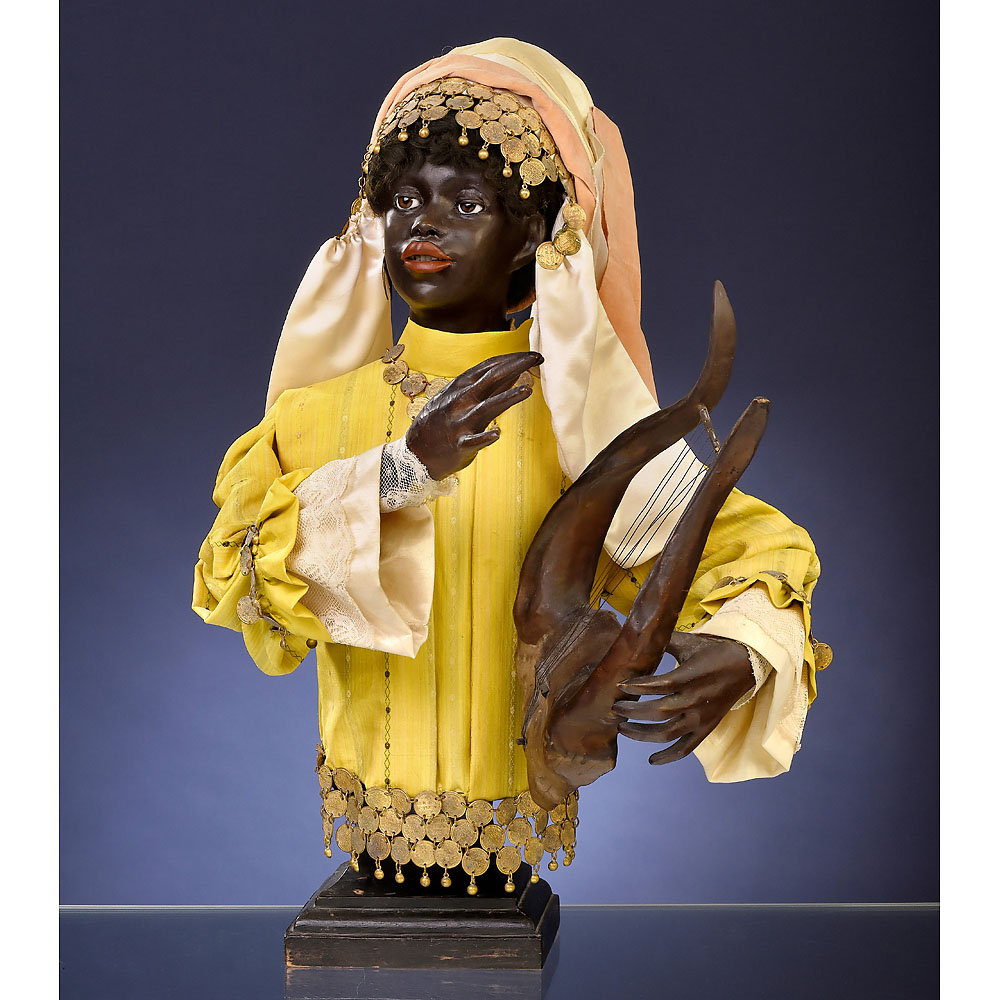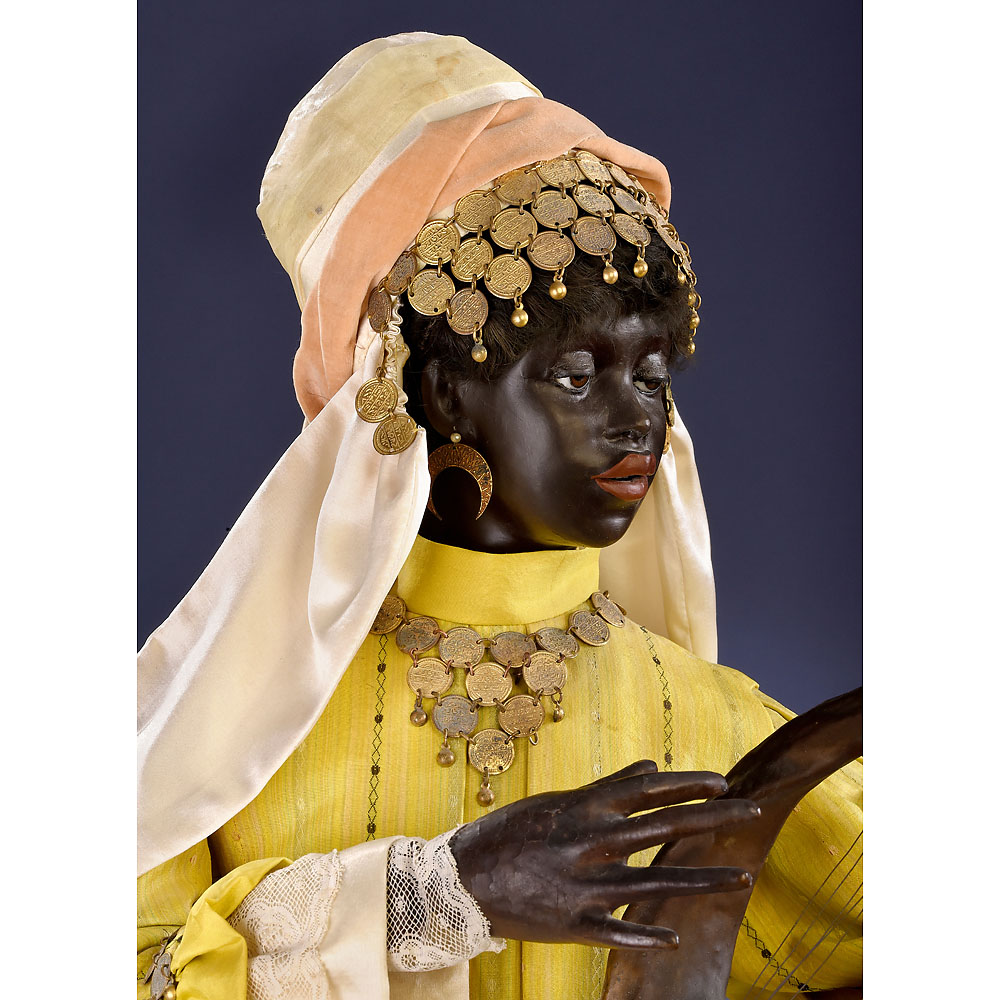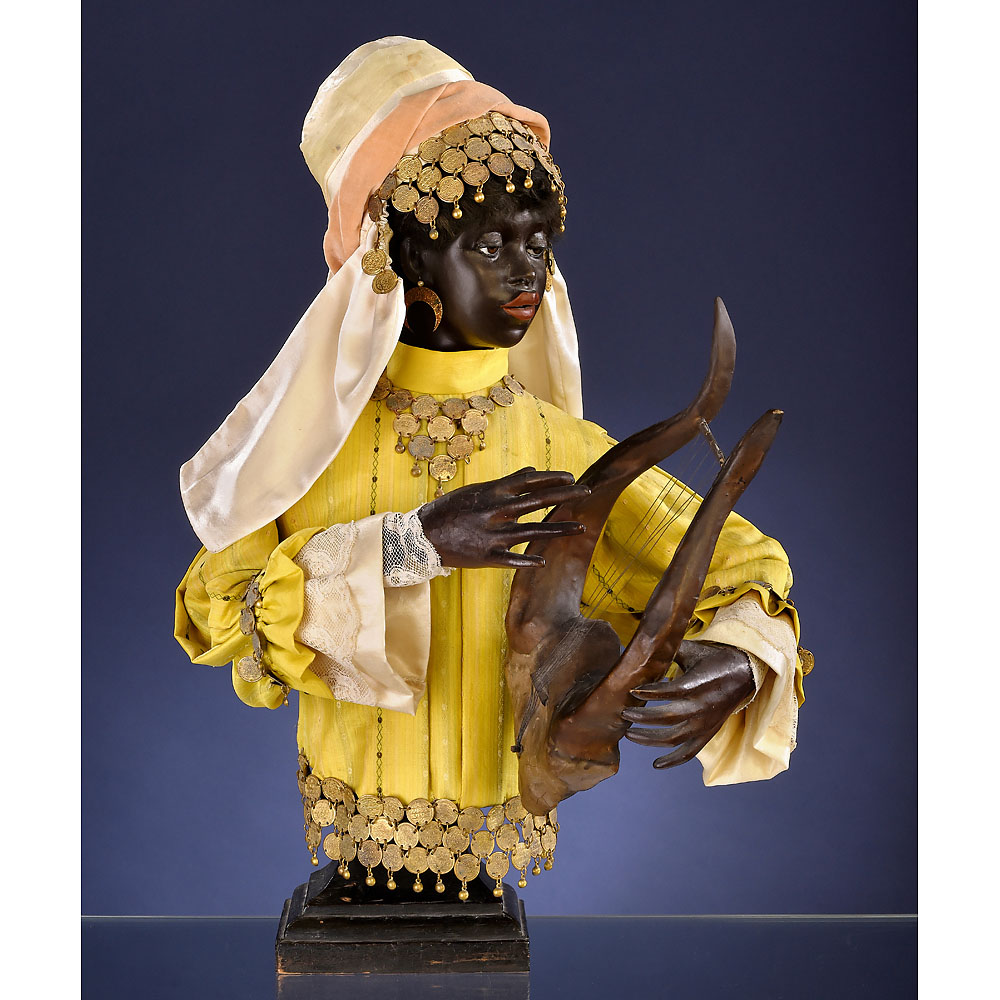Musical Automaton Bust of an Ethiopian Lyre-Player by Gustave Vichy, c. 1890
Starting bid: € 4.400 | Estimate: € 6.000 – 8.000
With papier-mâché head, open smiling mouth, brown glass eyes with articulated lids, original black mohair wig and a single crescent earring, on ebonized plinth with tune-sheet and metal plaque stamped: “G. Vichy, Paris, 5 Articles Français, Marque Deposé, Modele Deposé”, the torso containing going-barrel motor and two-air cylinder movement, in gold silk costume with metallic embroidery, headdress and the original coin decoration, ht. 20 in. (51 cm) including headdress, with acorn-form stop / start and modern key, surface of face restored, good working and playing condition. – Note: Part of a series of Vichy automata reminiscent of the polychrome-painted bronze busts by French artists such as Émile Guillemin and Charles Cordier. The impression of an animated sculpture is heightened by the graceful modelling of the face and hands and the slender plinth base in imitation of its bronze counter-parts. From the choice of subject, to the style of costume and the instrument she plays, the automaton was influenced by a 19th century fascination with ‘exoticism’ that reflected African cultures through a European lens. – The musician turns and gently bows hes head to the left and right, blinks and appears to play the instrument with a lifting and plucking motion of the right arm. – This example has been sympathetically restored by David Secrett and Margaret Glover. – Literature: Q. David Bowers, Encyclopedia of Automatic Musical Instruments, p. 80, for an identical piece, one of several French automata in the catalog of retailer Gustav Uhlig of Halle, Saxony.
Musikalische Automatenbüste einer äthiopischen Lyra-Spielerin von Gustave Vichy, um 1890
Mit Pappmaché-Kopf, offenem lächelndem Mund, braunen Glasaugen mit beweglichen Lidern, schwarzer Original-Mohairperücke und einem einzelnen halbmondförmigen Ohrring, auf ebonisiertem Sockel mit Melodienzettel und geprägter Metallplakette: “G. Vichy, Paris, 5 Articles Français, Marque Deposé, Modele Deposé”, der Torso mit Federwerkmotor und Walzenspiel-werk für 2 Melodien, in goldfarbenem Seidenkostüm mit Metallstickerei, Kopfschmuck und Dekor mit Original-Münzen, Höhe 51 cm einschließlich Kopfschmuck, mit eichelförmigem Stopp/Start-Hebel und modernem Schlüssel, Oberfläche der Vorderseite restauriert, guter funktionierender und spielender Zustand. – Dies ist Teil einer Serie von Vichy-Automaten, die an die polychrom bemalten Bronzebüsten französischer Künstler wie Émile Guillemin und Charles Cordier erinnern. Der Eindruck einer bewegenden Skulptur wird durch die anmutige Modellierung des Gesichts und der Hände sowie durch den schlanken Sockel in Anlehnung an die Bronzebüsten noch verstärkt. Von der Wahl des Themas über den Stil des Kostüms bis hin zum Instrument, das sie spielt, wurde der Automat von der Faszination des 19. Jahrhunderts für Exotik beeinflußt, die afrikanische Kulturen aus der europäischen Perspektive darstellte. – Die Musikerin dreht und neigt seinen Kopf sanft nach links und rechts, blinzelt und scheint das Instrument mit einer Zupfbewegung des rechten Arms zu spielen. – Dieses Exemplar wurde von David Secrett und Margaret Glover liebevoll restauriert. – Literatur: Q. David Bowers, “Encyclopedia of Automatic Musical Instruments”, S. 80, für ein identisches Stück, einen von mehreren französischen Automaten im Katalog des Händlers Gustav Uhlig aus Halle, Sachsen.










